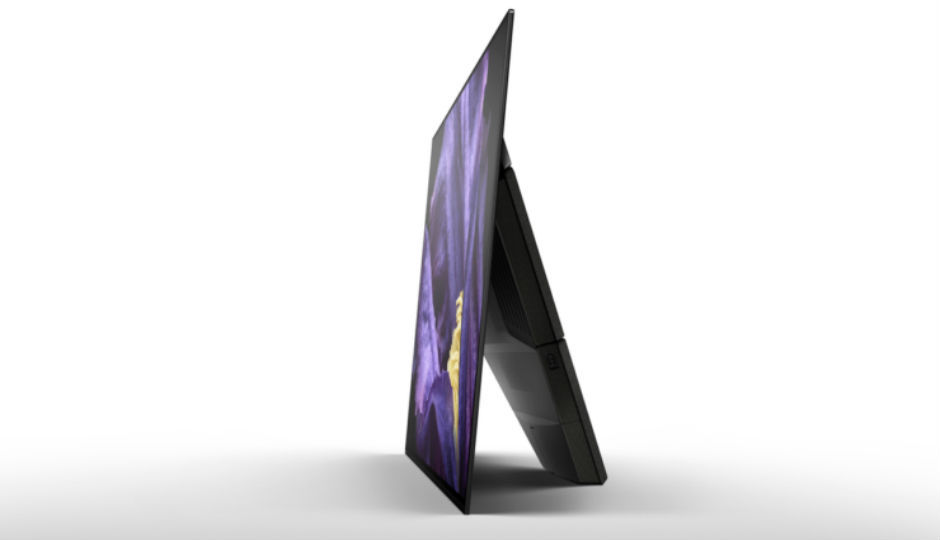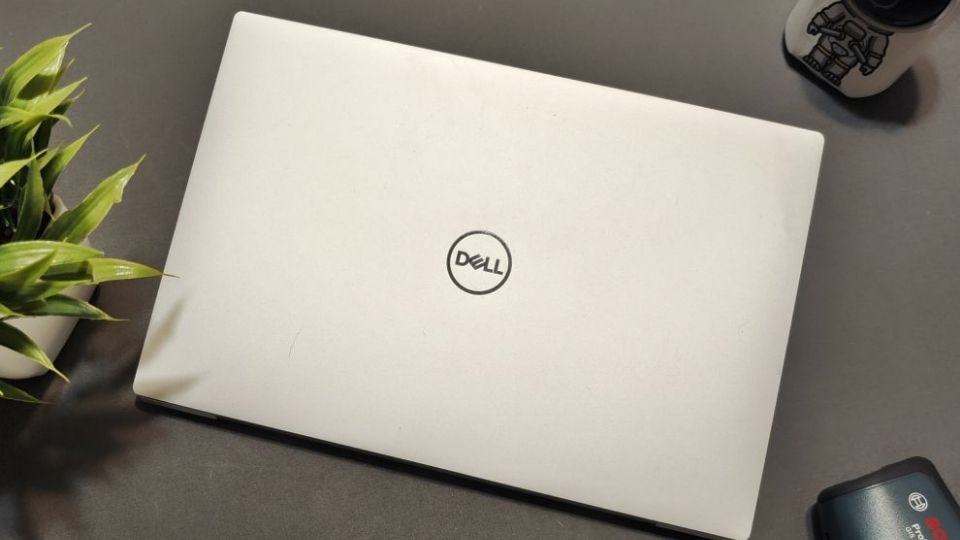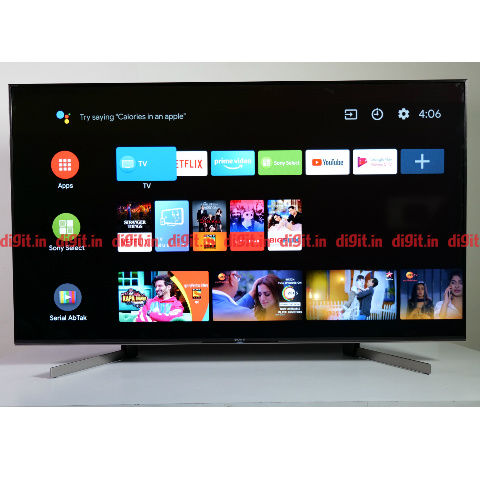
Sony as a brand has had a lot of ups and downs with its TV portfolio over the past decade, but in the past two years, the company has started streamlining the models it launches, hopped onto the OLED bandwagon and upped its picture processing game with the X1 Ultimate chip. Needless to say that Sony TVs commanding a premium price come with premium quality. However, over the past 2 years of reviewing TVs, a lot of budget offerings have emerged in the market offering 4K HDR and some smart capabilities making it hard to recommend a premium TV. With a budget of about 60 to 80k one can get a fantastic LED LCD TV. So does the Sony X95G have what it takes to grab attention? Let’s find out.
Specs at a glance
Panel Size: 55-inch (available in 75 and 85-inch as well)
Panel Type: VA LED
Panel Resolution: 3840 x 2160 – 4K
Panel Refresh Rate: 120Hz
HDR 10 support: Yes
Dolby Vision Support: Yes
Weight (with stand): 19.1kgs
HDMI Ports: 4
USB Ports: 3
Bluetooth: Yes
Wi-Fi: Yes
Ethernet: Yes
Speakers: 2 x 10W
Built-in storage: 16GB
Price: MRP: 2,49,900
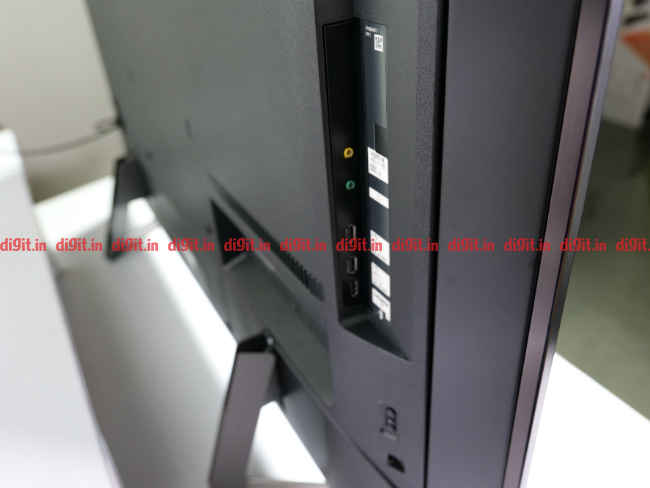
Display and picture quality
Let’s dive into the thing that matters the most first – display and picture quality. The Sony X95G has a VA panel with support for 4K resolution and HDR 10 along with Dolby Vision support. It also has a Netflix Mode, first launched with Sony’s Master Series line-up. For Dolby Vision content it has two settings – Dolby Vision Bright and Dolby Vision Dark. We will run through all of this in the sections below but let’s get a few burning points out of the way. The TV has a VA panel. This means a good representation of blacks but the viewing angles suffer. Here is one thing to keep in mind. Sony has a technology called ‘X-Wide Angle’, which helps with the viewing angles of a VA panel. It is present on the X95G but not on the 55-inch variant that we have here for review. It is there on the 75- and 85-inch variants of the TV, which is a bummer. We did play content and shift around the room and up to about 50 degrees you shouldn’t face any problem with the viewing angles of the TV. Beyond that, it is subjective to the light in your room. More light means more reflection at acute angles and in a dark room, blacks start looking a little grey. It isn’t a problem that breaks the TV’s viewing experience by any means, but we would have liked to see Sony’s wide-angle technology in the 55-inch variant as well.
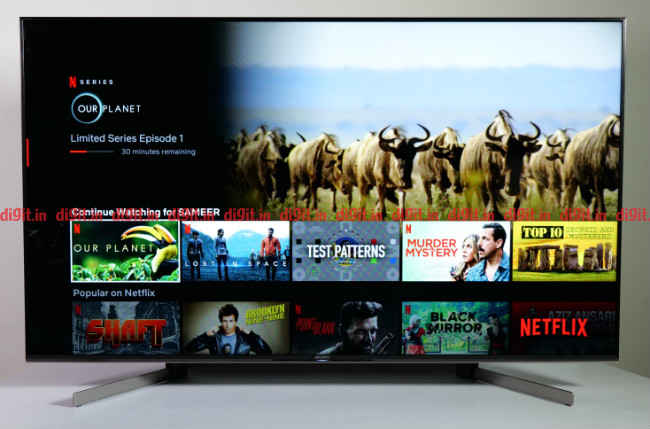
4K and HDR performance
I said at the beginning of the review that I find it hard to recommend expensive TVs because of the value mid-range TVs bring. Yes, I’d like to take that back, please. Firing up our test sequences of Altered Carbon using the built-in Netflix app and the first frame kept me immersed. In season 1 episode 7 there is a fight sequence that switches between slow motion and fast-paced action in a warehouse littered with dark corners and sunlight coming through the roof. The dynamic range and peak brightness in these situations make the content look desirable. The protagonist is wearing armour with a webbing design on it and it all looked clear as day and detailed, especially when the protagonist moves through the dark areas of the room.
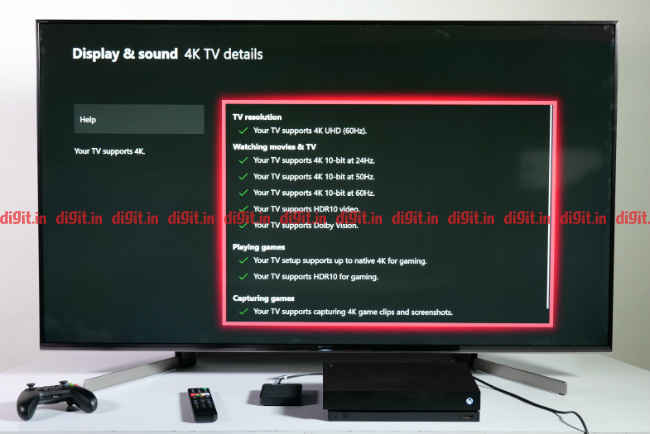
Other HDR content including DareDevil, Love death + Robots and more exhibited the same amount of detail in every scene they presented. The details in every frame of the content held my attention. The Panasonic TH-55FX800D (read our review here) is one TV from 2018 that I really liked and the Sony X95G surpasses the Panasonic one in terms of 4K HDR performance.
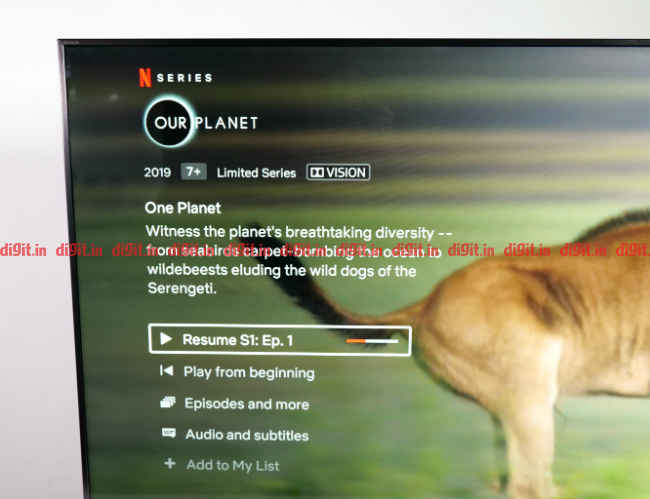
Coming to the Netflix mode, Dolby Vision Bright and Dolby Vision Dark, I personally prefer the Dolby Vision Bright mode for the content we played. In Dolby Vision Dark and Netflix mode, some content looked darker than I’d like and Dolby Vision Bright, as the name suggests, makes things a little bright.
FHD performance
We played a lot of FHD content from the TV like Wonder Woman, Young Sheldon, and more and FHD content is presented beautifully as well. The scenes in Young Sheldon look bright, and the facial features of the characters are visible with a lot of details. Even Wonder Woman, a movie whose performance I absolutely enjoyed on the 2018 Panasonic TV was miles ahead on the Sony. The gritty, slightly dark tone in well represented, and even Wonder Woman’s outfit looked detailed and the sequence where she walks through the battlefield fending off bullets was one to watch.
We even saw a lot of World Cup matches on this TV and fast-moving sports content from the Hotstar app was enjoyable without any artificial smoothing.
Gaming performance
Our trusty Xbox One X was the console of choice and we played the following games: Forza Horizon 4, Doom and Gears of War 4. Here’s the thing. In Gears of War, which is a 4K HDR game, we saw the dim Gears icons on the title screen and loading screen, which we have not seen on budget HDR TVs highlighting the ability of the TV to render details in the dark. The HDR brightness slider which looks gimmicky on most budget TVs actually worked in the game on the TV. The details of the bricks in walls, to the character models, and the environment as a whole in Gears 4, was one to behold.
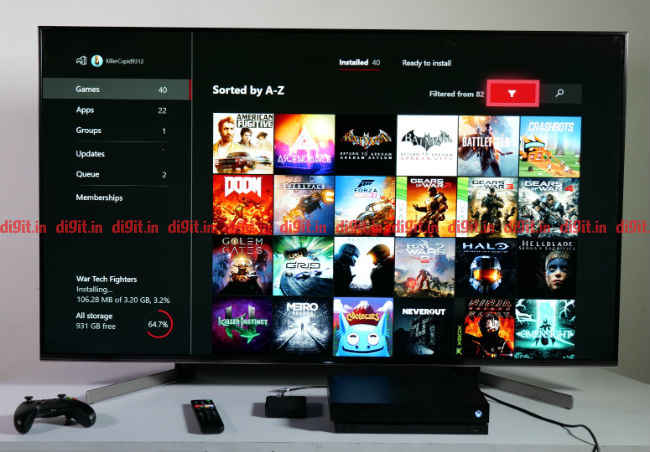
In Doom, which is a game in 4K but SDR, the surface of Mars looked dusty orange as it is supposed to. Sometimes when Doom loads a new area, you can see textures pop in. The pop-in was so evident in some sections that it is a testament to the TV’s ability to render sharp details up close.
Now for some bad news – HDMI 2.1
HDMI 2.1 as a new standard will help with a lot of things. It will help with variable refresh rate, support for 8K 60Hz, support for BT2020 and eARC. The Sony X95G supports only eARC. It can display content in 120Hz but does not support variable refresh rate, a feature available on PCs and expected to be standard across the future generation gaming consoles.
The presence of eARC is nice though as it ensures you can connect it to audio systems that support the feature. With eARC, consumers will be able to get DTS-X and Dolby Atmos audio from the TV to compatible audio gear.
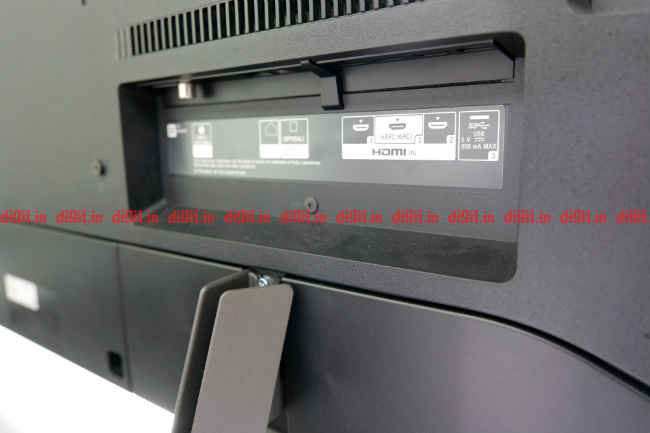
Not supporting all the features of HDMI 2.1 at this stage is still something one can consider acceptable as it will be a few years before most of the features are implemented into the content. But considering the price of the TV, consumers will use it for a decade before upgrading and the lack of some of the features doesn’t exactly make it 100 percent future-proof.
Audio performance
Sony has implemented its Acoustic surface technology from its flagship OLED TVs and the sound from that is actually quite good considering they are TV speakers. But from the X85G I was left wanting a little more. Dialogues are clear, music is enjoyable, but the overall punch is missing. The thud of a shotgun, though present, feels a bit lacking. For everyday consumption, the speakers are pretty good, especially if you watch news, TV shows or switch channels. They sound a lot better than what we have seen on TVs around the Rs 1,00,000 to Rs 1,50,000 price point. You will need to resort to a soundbar or a home theatre to have an immersive movie watching or gaming experience.
UI
Sony has been helming Android TV OS since the beginning of Smart TVs and the experience has been lacklustre and laggy until the launch of Android TV 8. With the Sony X95G, we have Android 8 out of the box and the experience is butter smooth. There was not one moment, be it when gaming on a console, streaming using the native apps, logging into the play store when the UI didn’t respond. It works very smoothly.
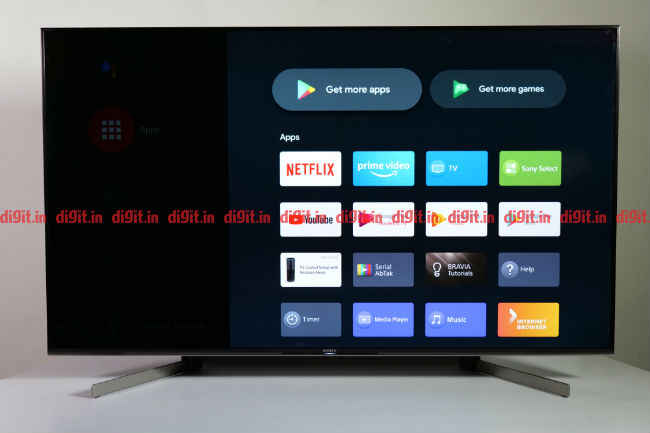
There are some subtle changes to the UI, which work well. If you want to change sources, picture or audio settings, you don’t need to pull up the right side navigation bar to hamper the viewing experience. For basic setting changes like picture mode, audio, source and more, a small strip comes up at the bottom of the display and it is easy to navigate. You can add certain settings you’d like to access from this bar at the bottom, making it easier for you to change your most frequently used settings.
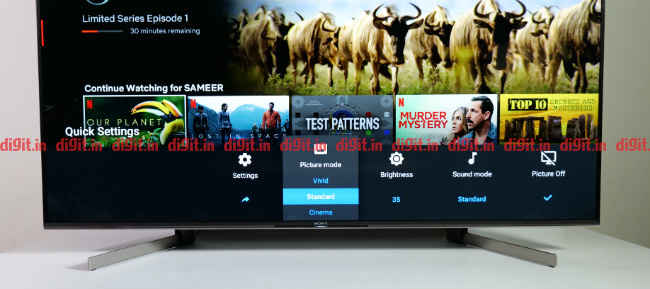
Apart from the new settings menu, the rest of the Android TV UI is the same that we have seen on previous Sony TVs. You have everything neatly laid out into rows. The top row houses all the apps you use frequently and the subsequent rows highlight content from other apps and streaming services based on your usage and preference. It is a clean UI giving content key visibility.
Remote control
What’s this? A new remote control? A new design! Has Sony finally heard our prayers? Though the layout of the remote control had changed slightly, it is the build and the buttons themselves that have gone through the much-needed upgrade. The remote control now has a textured back giving it a good grip. The buttons are well spaced and have a nice rubbery click to them. If you grip the remote in the centre, you will have access to most of the functions in the reach of your thumb. Unlike the LG TV UI, Sony’s TV remote still doesn’t have a mouse feature and typing is still manually navigating the on-screen keyboard, but you can use the Android TV app on your smartphone to make the typing process easier. Since passwords for apps like Netflix, Prime Videos and more can be saved in your Google Account, logging in to the TV once ensures all your streaming service apps are up and running without the need to log in again and again.
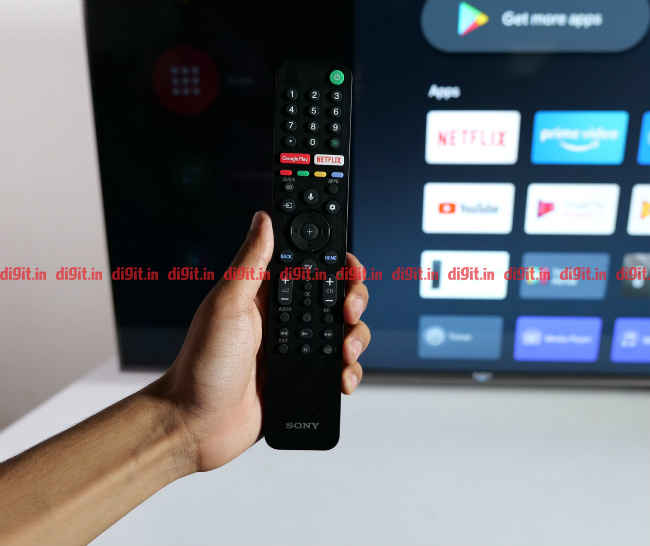
Build and design
Finally, let’s talk about the build and design of the TV. The TV isn’t the slimmest out there, and considering the amount of tech that goes into backlighting it along with no external power brick, it’s OK. The placements of the ports are pretty standard. They are all on the right side of the TV. On the back, we have a USB port, three HDMI ports, optical audio port, LAN port, along with the good old antenna. On the right-side panel, we have one HDMI port, two USB ports, headphone out and a video-in port.
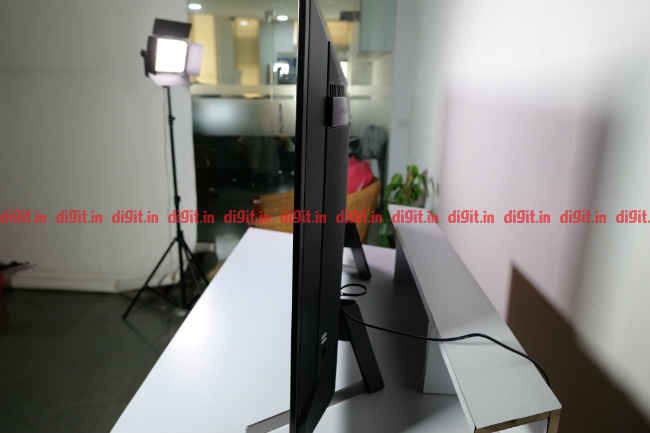
The thickness of the TV makes it convenient to reach the ports on the side when the TV is wall mounted.
Coming to the bezel, the TV has really slim bezels which do not interfere with the viewing experience. There is a small white LED at the bottom of the TV but you can control its intensity in the TVs UI. It is not a hindrance when watching TV.
If you decide to put the TV on a tabletop, then know that the feet are really wide, which means you will need a big table for this TV. The feet are so wide so that a soundbar can be comfortably placed below the TV without any problems. There is enough space for you to fit a gaming console below the TV if you want.
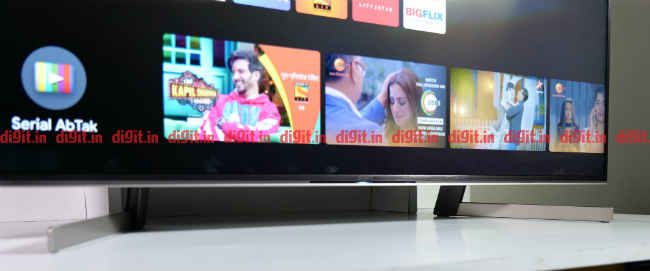
Bottom Line
The Sony X95G is a fantastic premium LED LCD TV and a worthy consideration for those that don’t want to get on the OLED bandwagon. It has a bright rich display for consuming content and gaming. The UI is fluid, features plentiful and audio is acceptable for TV viewing. Where it lacks is missing out on the ‘X-Wide Angle’ technology found on its larger siblings and limited HDMI 2.1 functionality. We haven’t tested other TVs in this price range so it’s hard to tell how it compares to the 2019 offering from LG, Samsung, etc. But if you are looking for the latest premium LED TV, you can definitely consider this one. You won’t be disappointed. There are 2018 flagships from other brands available at cheaper price points, making for a better value proposition, but since this is a 2019 TV, we’d reserve our comparison of this TV with other 2019 TVs and not models from 2018.
[ad_2]
Source link

